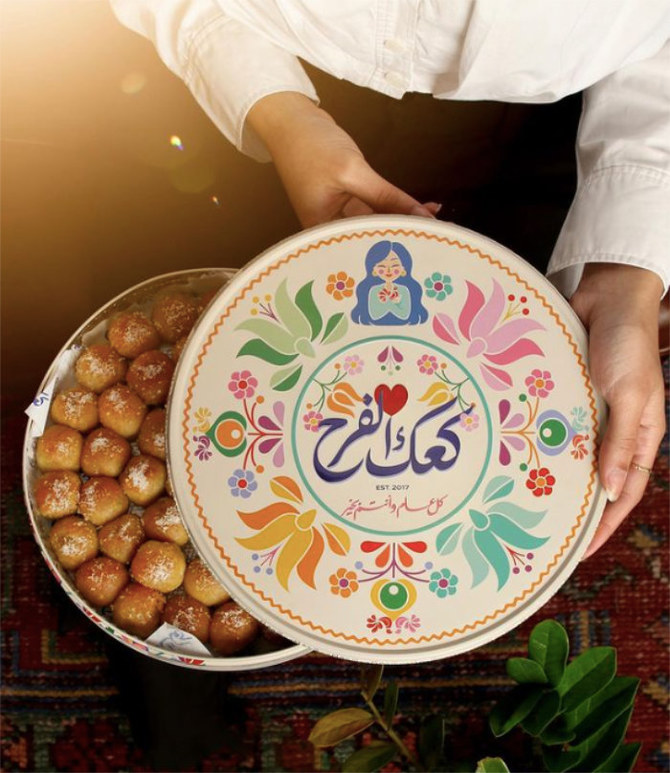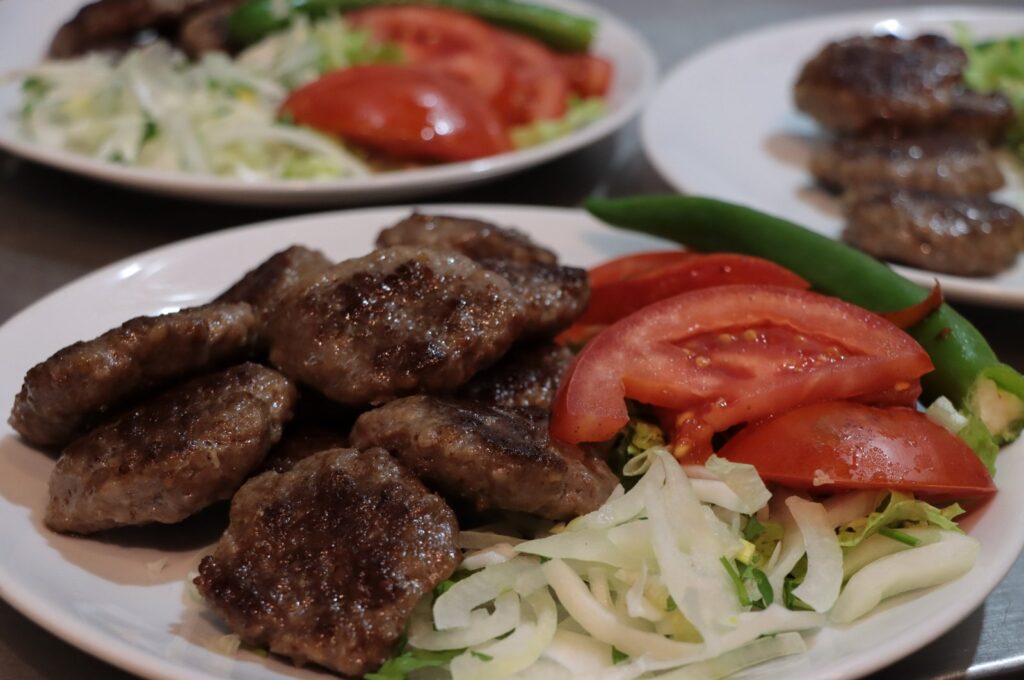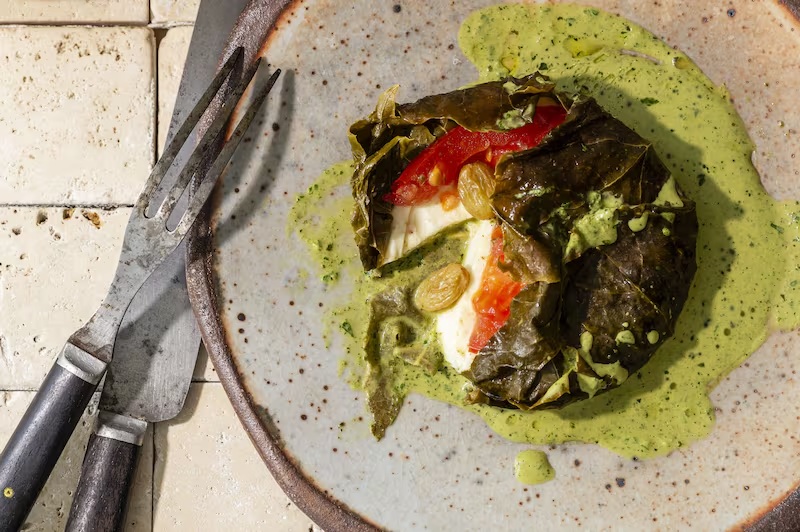
Amy Bizzarri
Corbezzolo honey tricks the palate. Instead of the sweetness one would expect, this extremely rare honey, born in the mountains of the Italian island of Sardinia, is surprisingly bitter, with notes of leather, liquorice and smoke. Nomadic beekeepers have been setting up beehives in the region to collect this aromatic treat – derived from the white, bell-shaped flowers of the wild strawberry tree – for more than 2,000 years.
Statesman, lawyer and philosopher Marcus Tullius Cicero (106-43 BCE) mentioned the honey in his defence of a Roman citizen accused of murder in Nora, Sardinia. “Omne quod Sardinia fert, homines et res, mala est! Etiam mel quod ea insula abundat, amarum est! (Everything that the island of Sardinia produces, men and things, is bad!),” he exclaimed. “Even the honey, abundant on that island, is bitter!”
Even the honey, abundant on that island, is bitter!
Perhaps Cicero didn’t know that beyond its bitterness, corbezzolo honey is packed with nutrients. Vitamin and mineral-rich, with anti-inflammatory properties, it’s been prized by generations upon generations on an island known for the notably long lifespans of its inhabitants, many of whom live to more than 100 years old.
Used in traditional medicine as a sleep inducer, cough sedative and anti-diarrheal, thanks to its astringent and anti-inflammatory properties, it could also be anti-tumoral: A 2019 study conducted by researchers at the Polytechnic University of the Marche and the Universities of Vigo and Granada in Spain, published in the Journal of Functional Foods, concluded that corbezzolo honey reduces growth and division of colon cancer cells grown in the lab.
The legend of the broadleaf corbezzolo shrub, known in English as the strawberry tree for its reddish-orange, strawberry-sized fruits, first appear in The Book of Days, Ovid’s exploration of the ancient Roman calendar, written in the early 1st Century CE. According to Ovid, the Dea Carna, Roman goddess and protector of health, vitality and door hinges, saved the newborn heir of the ancient Latin city of Alba Longa by tapping the door of the child’s house three times with the twig of a strawberry tree.

Corbezzolo honey is obtained from the autumnal flowering of the strawberry tree (Credit: Nedrofly/Getty Images)
Roman author, naturalist and philosopher Pliny the Elder gave the wild shrub its botanical name, Arbutus Unedo. Apparently not a fan of the sour fruit, Pliny named it after the Latin expression Unum edo: “I’ll only eat one.”
Corbezzolo honey production was well established on the island by the Middle Ages. Eleanor of Arborea (1347-1404 CE), one of the era’s most powerful judges, mandated heavy fines and, in worst-case scenarios, ear amputation for the theft of corbezzolo-collecting beehives, in her legal code Carta de Logu, which she wrote in the Sardinian language in 1392 CE.
The strawberry tree grows wild throughout the Mediterranean basin, Western Europe and even Ireland, though Sardinia holds the record for corbezzolo honey production.
The corbezzolo’s fruits ripen slowly, changing colour several times during the process, from yellow to orange to ripe red. But it’s the shrub’s mildly sweet, white flowers – which bloom from October until December – that the bees pollinate and whose nectar they transform into a honey with an extraordinary flavour profile that encapsulates the smells and flavours of Sardinia.

Bees pollinate and collect nectar from the corbezzolo shrub’s bell-shaped white flowers (Credit: Mauro Rodrigues/Alamy)
The flowers’ petals unfold slowly; a curiously delicate process that a heavy downpour can easily bring to a halt. And because the flowering takes place in late autumn when the weather can be cold, rainy and windy, the bees sometimes struggle to even make it out of their hives to collect the precious nectar. The bell-shaped flowers produce about half as much nectar as other flowers, so the bees have to work extra hard to collect enough. These three key factors make corbezzolo honey so precious that it’s hard to find outside Sardinia.
No one knows exactly what gives the honey its uniquely bitter taste, though some believe it’s due to the presence of glycoside arbutin (a molecule that binds with sugars in plants) in the nectar of the strawberry tree’s flowers.
No one knows exactly what gives the honey its uniquely bitter taste
Honeys with complex flavour profiles like corbezzolo can be analysed as a sommelier analyses a fine wine. Indeed, Italy is home to a national registrar of honey sommeliers, trained by the Bologna-based Albo Nazionale degli Esperti in Analisi Sensoriale del Miele, the National Register of Experts in Sensory Analysis of Honey. Beyond its bitterness, corbezzolo honey features sharp notes of balsamic vinegar, pine tree sap, leather, liquorice and coffee with a lingering, smoky finish. It’s often added to coffee to enhance the drink’s bitter aromas. Deep amber in colour, it takes on a light brown hue upon crystallisation.

Corbezzolo honey is often drizzled on seadas, a typical Sardinian dessert (Credit: sal61/Getty Images)
And just like a fine wine, it also pairs perfectly with several traditional Sardinian dishes.
“It’s delightful when drizzled atop seadas or orillettas, two typical Sardinian desserts,” said Fabio Pibiri, a Chicago-based wine importer from Sardinia. “For an unforgettable pairing, pair with aged pecorino sardo, a sweet sheep’s milk cheese, and Cannonau Nepenthe, an intense, captivating red wine produced in the province of Nuoro in central-west Sardinia.”
“Miele corbezzolo [corbezzolo honey] is a fascinating and unique product, and an integral part of Sardinian food culture well worth seeking out,” said Letitia Clark, author of Bitter Honey: Stories & Recipes from Sardinia. “Pair it with an aged Vernaccia, a white wine from the [Sardinian] region of Oristano, yet another fascinating local product.”
Corbezzolo honey encapsulates the Mediterranean island it calls home, with its earthy notes of other wild Sardinian flora and tinge of minerality, reflective of the surrounding sea.

Atop Sardinia’s mountains, nomadic beekeepers set up beehives to collect honey (Credit: Apicoltura Bolognani)
Famed Italian poet Giovanni Pascoli noted the colours of the Italian flag in the corbezzolo tree itself – green, glossy leaves, white flowers, red berries – and recalled its struggle to thrive on the windswept mountaintops in his 1906 Ode to the Corbezzolo:
“O verde albero italico, il tuo maggio è nella bruma: s‘anche tutto muora, tu il giovanile gonfalon selvaggio, spieghi alla bora.” “Oh green Italian tree, your May month is in the mist: even if everything else dies, you, the youthful wild banner, unfold to the northern wind.”
Courtesy: BBC
The post Italy’s rare, surprisingly bitter honey appeared first on The Frontier Post.







